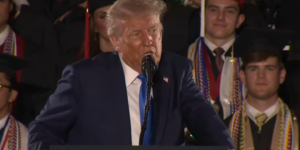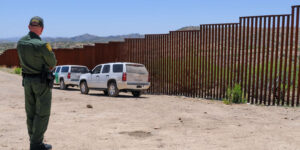Behind the Charm, a Political Pope
Share:
Bergoglio’s exile ended abruptly in 1992 when Quarracino, now a cardinal, recommended to his superiors in Rome that he be made auxiliary Bishop of Buenos Aires.
He returned to the city, but instead of moving into a house at the archdiocese, went back into a Jesuit residence. There, colleagues from that period say, he began to meddle again. Once, when a friend of the order left them a gift of pastries, Bergoglio grabbed it and carried it to the kitchen, where maids and cooks could share the goodies.
“We didn’t need a bishop to teach us how to share,” recalls one Jesuit present, who requested anonymity because he does not want to offend the pope.
After a few months, some Jesuits began to ask when Bergoglio would leave. Eventually, says a senior Jesuit at that time, the order formally asked him to move.
“Pray for Me”
Bergoglio is not the first Jesuit to climb the ranks of the broader Church. While they do not seek higher office, they accept appointments as bishops, archbishops and cardinals in obedience to the pope, who decides these promotions.
In the archdiocese, Bergoglio ascended quickly. By 1997, with Quarracino ailing, Pope John Paul II designated Bergoglio his successor to lead the archdiocese. Eight months later, Quarracino died.
Church officials say Bergoglio inherited an archdiocese whose finances were in disarray. He soon proved an efficient administrator; one who would rearrange its affairs to focus more on ministry to the poor.
Among other measures, he created a new vicariate to organize the charity work and preaching that priests carry out in the many villas, or slums, that surround Buenos Aires. More than 30 priests are now permanently based in the villas—there were nine when he first took over.
“He carried the church out into the streets of Buenos Aires,” says Gabriel Marronetti, the parish priest at the church in Flores where Bergoglio felt the call to service.
His popularity grew among parishioners. Photographers captured images of Bergoglio, on his own trips into the slums, washing the feet of poor faithful as part of the ritual on Holy Thursday before Easter.
Bergoglio’s political profile also grew.
He angered President Nestor Kirchner in 2004 with a speech criticizing the “exhibitionism and strident announcements” of political leaders. In a chaotic dispute with the administration of President Cristina Fernandez, Kirchner’s widow and successor, he sided with farmers and opposed her push for a gay-marriage law. He did support an alternative bill to allow civil partnerships.
With growing renown came renewed questions about his actions during the Dirty War. Lawyers looking into many of the disappearances sought to question Bergoglio, but he exercised a provision in Argentine law allowing senior church officials to decline a summons to court.
When attorneys insisted in 2010, he forced the court to come to him, prompting a group of dozens of lawyers and judicial officials to set up a tribunal inside the archdiocese. An image of the Virgin Mary hung on one wall and other priests sat nearby, protectively.
“What sort of humility is that?” asks Estela de la Cuadra, the aunt of the disappeared baby, who is still seeking answers about her missing family members. “He’ll pose for photos paying his hotel bill, but he won’t testify in court like the rest of us?”
When Benedict stepped down in February, many Church observers thought that Bergoglio’s moment had passed. He had lost out in 2005 and was now perhaps too old to contend for the papacy at a time many Catholics were calling for the rejuvenation of the Church.
His sister, Maria Elena, recalls how she and a now deceased sister, Marta, had joked with their brother when he returned from the previous conclave.
“So you got off the hook,” Marta told him.
“Yes,” Bergoglio replied. “Thank the Lord.”
This time, before he left, Bergoglio phoned Maria Elena for a quick goodbye. “Pray for me,” he told her. “I’ll see you when I get back.”
Additional reporting by Guido Nejamkis in Buenos Aires and Edward Taylor in Frankfurt; edited by Simon Robinson, Richard Woods and Sara Ledwith.
© 2013 Thomson Reuters. All rights reserved.
Share:





































